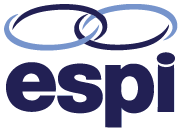The first step of 5S involved cleaning up the clutter and sorting
out what was needed from those tools, materials, and supplies that were not
frequently used. In the second step, everything was put away in its proper
storage location. Now it's time to do a more thorough cleaning.
5S Shine (Seiso (清掃) - Keeping It Clean
Once you have all of the clutter and debris cleaned up, and the
remaining items have been organized and put in their proper storage either at
the work place or in a remote location, you need to keep it that way. The
shine step is essential to the success of a 5S program. For 5S to work,
it has to be easy to find what you need when you need it. The dirtier a
facility is the less effective your operation will be.
To start the shine step, clean
everything. Scrub the entire facility, including the floors, work
surfaces, machines, storage containers, shelves, racks, and tools. The
cleaner the facility, the easier it will be to identify problems or things out
of the norm.
Cleaning can improve the safety in a
facility. Dust and dirt can create
health hazards and also makes it harder to identify safety hazards. One
of the main goals of 5S is make problems jump out to anyone walking by. Cleaning
is performed so that the facility will be clean one day, and dirty again the
next. The more you can create an environment that is easy to inspect and
easy to maintain, the more effective the 5S program will be.
An effective 5S program will create a
permanent change in a facility. Part of this process involves painting. Some
companies paint their facility floor a light color so that dirt is easy to
spot. Others paint utility services, such as pipes and conduits, to make
it easy for maintenance to identify the right lines to work on.
The shine process can also involve
installing new equipment such as better lighting. Good lighting makes it
easier to spot items out of place and highlights direct and trash.
5S Shine - Who Is Responsible For
Cleaning?
5S shine is not just the job of a janitor or a cleaning crew, it
is everyone's responsibility.
Every work area should have a person, or group, assigned to clean
that area. The best approach is to have those who do the work in an area, also
be responsible for cleaning that area at the end of each day. This results in:
- Work practices that help to keep the work area clean throughout the work day.
- Those who are doing the cleaning also inspect their equipment and spot and fix or report any problems.
- Each employee recognizing any safety hazards that exists in their work area and having those corrected immediately.
- Everyone properly identifying and properly storing all tools, dies, bits, jigs, etc.
No area should be left unclean. Look at the workplace through the eyes of a visitor and take the responsibility for keeping your entire workplace clean and safe. When done on a regular, frequent basis, cleaning and inspecting should not take a lot of time, and in the long run will save time and possible injury.
Join us next week for 5S Techniques - Standardize (Seiketsu)





